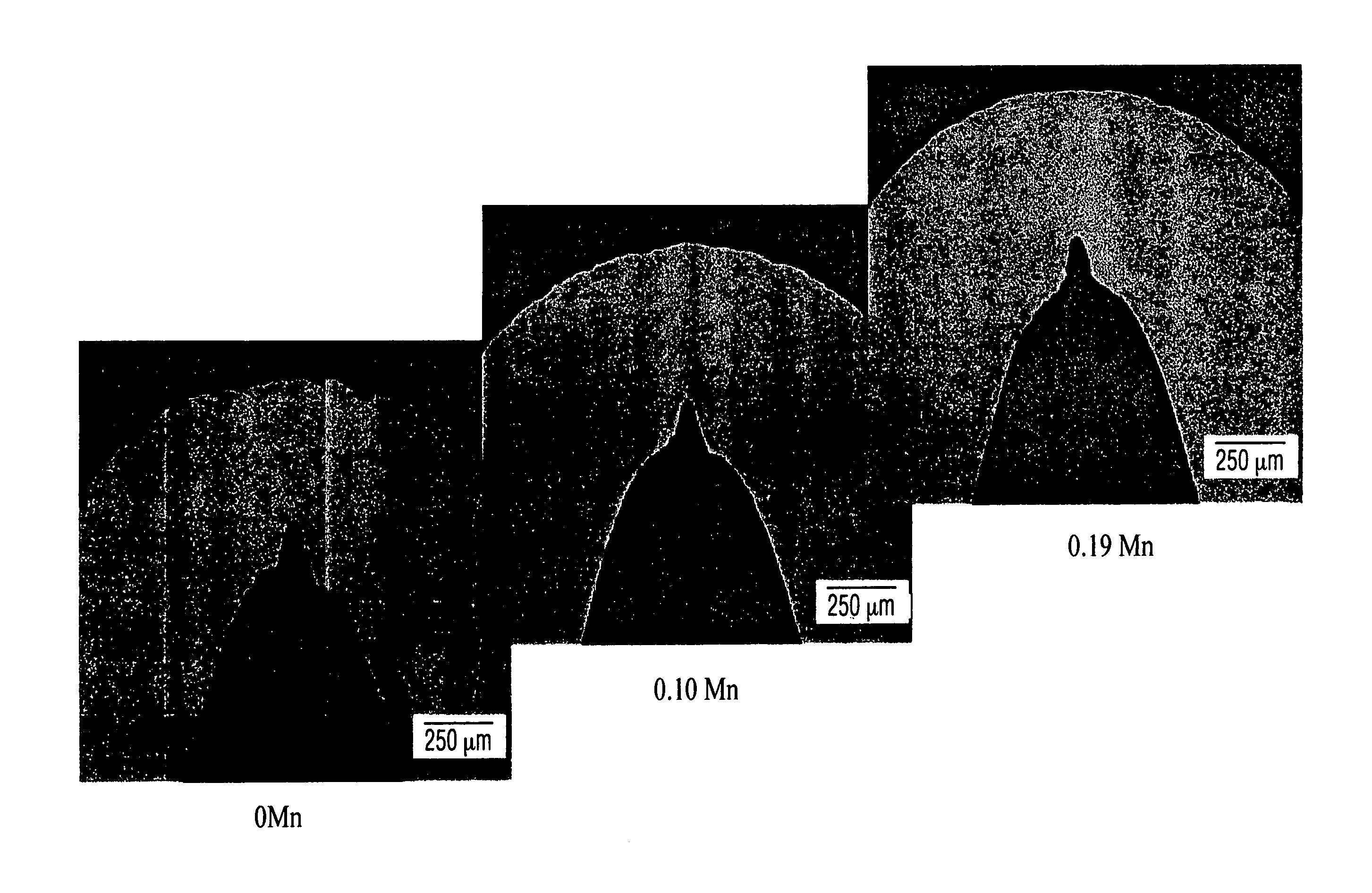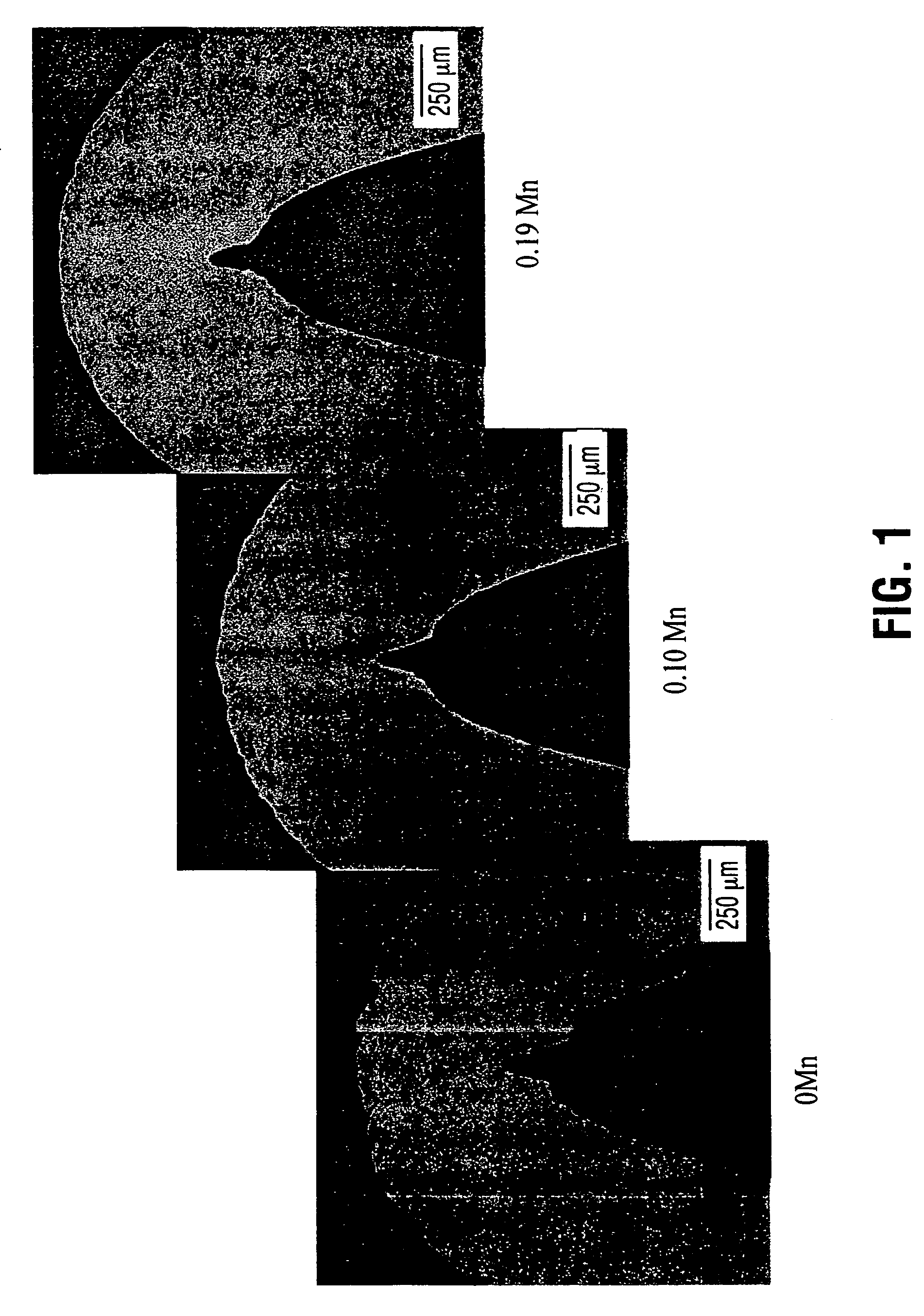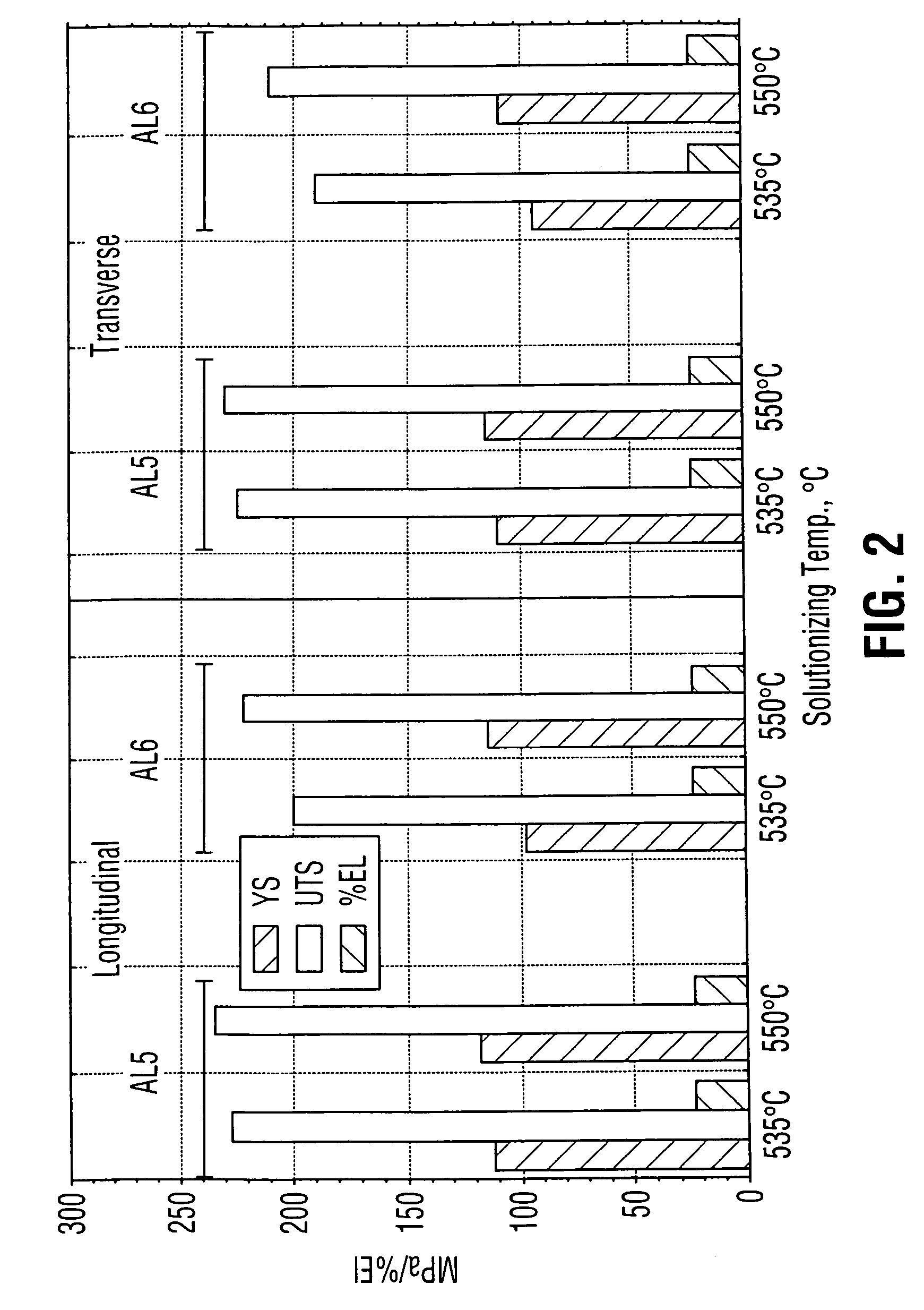Process for making aluminum alloy sheet having excellent bendability
- Summary
- Abstract
- Description
- Claims
- Application Information
AI Technical Summary
Benefits of technology
Problems solved by technology
Method used
Image
Examples
example 1
[0052]Two alloys were tested with and without manganese present. Alloy AL1 contained 0.49% Mg, 0.7% Si, 0.2% Fe, 0.011% Ti and the balance aluminum and incidental impurities, while alloy AL2 contained 0.63% Mg, 0.85% Si, 0.098% Mn, 0.01% Fe, 0.013% Ti and the balance aluminum and incidental impurities.
[0053]The alloys were laboratory cast as 3¾×9″ DC ingots. These ingots were scalped and homogenized for 6 hours at 560° C. and hot rolled to 5 mm, followed by cold rolling to 1.0 mm. The sheet was solutionized at 560° C. in a salt bath and quenched to simulate the T4P practice.
[0054]The results obtained are shown in Table 1 below:
[0055]
TABLE 1T4P YIELDPAINT BAKE YIELDBENDABILITYALLOY(MPa)(MPa)rMIN / tAL187.52190.2AL21112130
[0056]Both alloys gave 29–30% tensile elongation with JIS (Japanese Standard) specimen configuration. The paint bake is T8 (0% strain).
example 2
[0057]Two alloys in accordance with the invention (AL3 and AL4) and two comparative alloys (C1 and C2) were prepared with the compositions in Table 2 below:
[0058]
TABLE 2Chemical Composition(wt %, ICP)AlloyMgSiMnCrFeTiInventionAL30.620.800.19—0.220.01AL40.600.800.110.110.210.01ComparisonC10.600.810.00—0.200.01C20.620.840.10—0.220.01
[0059](a) The alloys were DC cast 3.75×9 inch ingots and the ingot surface scalped, followed by homogenizing for 6 hours at 560° C. The ingots were then hot rolled followed by cold rolling to about 1 mm gauge. The sheet was solution heat treated for 15 seconds at 560° C., then quenched to 80° C. and coiled. The coil was then slowly cooled at a rate of 1.5–2.0° C. / hr to ambient and naturally aged for one week. The results are shown in Table 3. FIG. 1 shows the effect of Mn content on bendability, For bendability of sheet without prestrain with the minimum r / t as observed by the naked eye, it is difficult to observe a clear trend-results are in Table 3. Howe...
example 3
[0065]Tests were conducted on two alloys AL5 and AL6 with the casting and processing being done in commercial plants. The compositions of these alloys are shown in Table 6 below:
[0066]
TABLE 5HotRollingComposition in wt % (ICP)Coil #GaugeAlloyCuMgSiFeMnLine B(mm)AL50.300.580.770.240.21B-13.50.300.590.770.240.21B-22.54AL60.580.770.240.22B-32.540.580.770.240.22B-43.5
[0067]Two ingots each of the AL5 and AL6 compositions given in Table 5 were DC cast, scalped, homogenized at 560° C. and hot rolled. One AL5 (Coil B-2) and one AL6 (Coil B-3) ingot were hot rolled to 2.54 mm, cold rolled in two passes to 0.93 mm gauge and solutionized to obtain the T4P temper. The other pair of AL1 (Coil B-1) and AL6 (Coil B-4) ingot, were hot rolled to 3.5 mm, cold rolled to 2.1 mm gauge in one pass, batch annealed, cold rolled to final gauge of 0.93 mm in two passes and then solutionized to obtain sheet in the T4P (intermediate gauge anneal) temper. The coils were batch annealed at 380° C. with a soak of ...
PUM
| Property | Measurement | Unit |
|---|---|---|
| Temperature | aaaaa | aaaaa |
| Temperature | aaaaa | aaaaa |
| Temperature | aaaaa | aaaaa |
Abstract
Description
Claims
Application Information
 Login to View More
Login to View More - R&D
- Intellectual Property
- Life Sciences
- Materials
- Tech Scout
- Unparalleled Data Quality
- Higher Quality Content
- 60% Fewer Hallucinations
Browse by: Latest US Patents, China's latest patents, Technical Efficacy Thesaurus, Application Domain, Technology Topic, Popular Technical Reports.
© 2025 PatSnap. All rights reserved.Legal|Privacy policy|Modern Slavery Act Transparency Statement|Sitemap|About US| Contact US: help@patsnap.com



